The first of Coimbra’s two Santa Clara monasteries was founded by the river in 1283. When frequent flooding compelled the construction of a new monastery nearby, the Monastery of Santa Clara-a-Nova (“the new”), it added “a velha” (“the old”) to the name in 1677.
Dona Mor Dias founded the monastery as a residence for the Order of Poor Clares. However, the venture was initially short-lived because the Santa Cruz monks were opposed to a new female monastic house, and the early monastery was dissolved in 1311.
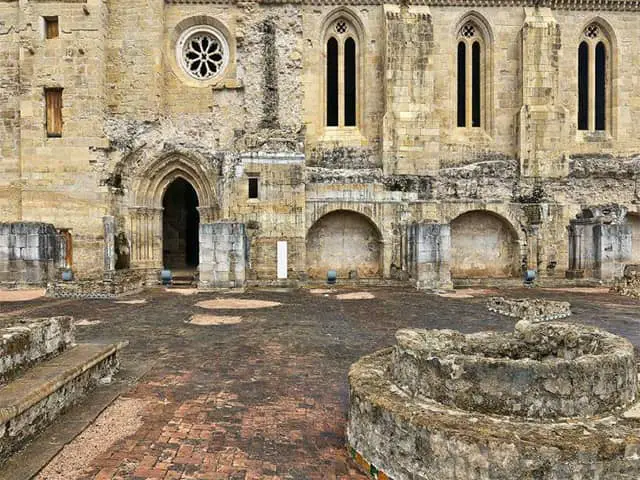
Three years later, Elizabeth of Aragon (later renamed Queen Isobel after marrying King Denis of Portugal) sponsored the restoration of this monastery. Work on the church began in 1316, and it was consecrated in 1330. The ruins that can be seen today are the result of construction work done during this time period.
Establishment of the Santa Clara Convent
Dona Mor Dias founded the monastery in 1286, but the Santa Cruz monks were opposed to the existence of a new feminine monastic house, so the community was closed a few years later. Elizabeth of Aragon, however, reopened the monastic house in 1314, and the Poor Claire nuns returned to Coimbra.
The old structure, which still stands today, was part of a larger project sponsored by the Saint Queen.
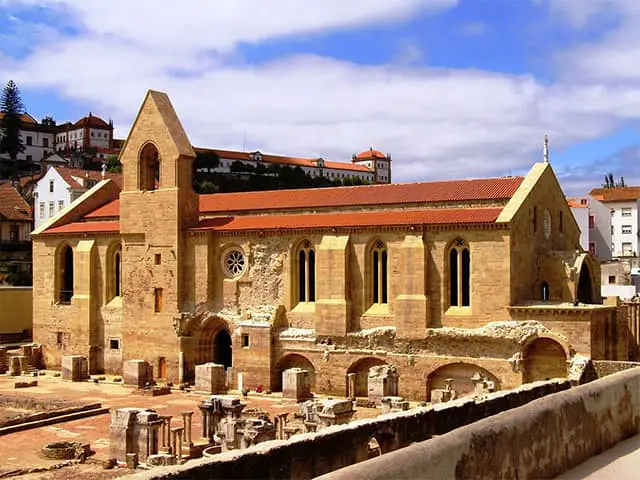
The Santa Clara Monastery, built on the left bank of the Mondego River, was always a victim of recurring water invasions. Floods dictated the timing of the construction, and the price of the monastery gradually increased, necessitating the addition of another floor.
Over the next centuries, the nuns’ lives were conditioned by the river’s behavior, and in 1677, the community left the space to occupy the Santa Clara a Nova Monastery, which was built by order of King John IV on the opposite bank of the Mondego River.
Restoring the Monastery
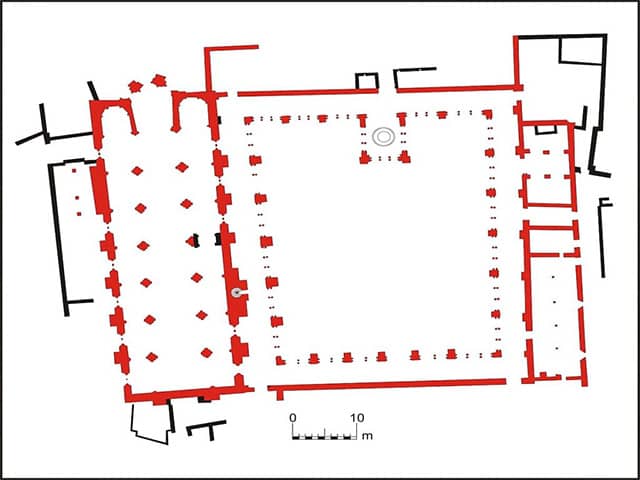
Although it underwent restoration work in 1930, the dedication of the Mondego River waters kept the old monastery in ruins and surrounded by a romantic aura. However, in 1991, an ambitious retrieval and revaluation project for the gothic monastic space was launched, coordinated by archaeologist Artur Côrte-Real.
The intervention enabled workers to uncover the lower part of the church and cloister and collect a very important collection that is material evidence of its past thanks to the construction of a peripheral water containment curtain.
Domingos Dominguez was the first to design a building. He had worked on the cloisters at the Monastery of Alcobaça, and his influence can be seen in the floor plan and several architectural details. His work was continued in 1326 by the architect Estevan Dominguez, who had previously worked on the Lisbon Cathedral.
When King Denis died in 1325, Queen Isobel retired to the monastery, where she continued to do good works such as caring for pilgrims and supporting local hospitals. When Queen Isobel died in 1336, she was buried in a grand, Gothic-style tomb on the monastery grounds.
Elizabeth of Aragon was beatified in 1526 and canonized in 1625, having always been a model of piety and charity.
The area was constantly flooded due to the monastery’s location on the left bank of the Mondego River. Over time, the nuns raised the floor level to try to mitigate the effects of the flooding, which worked to some extent.
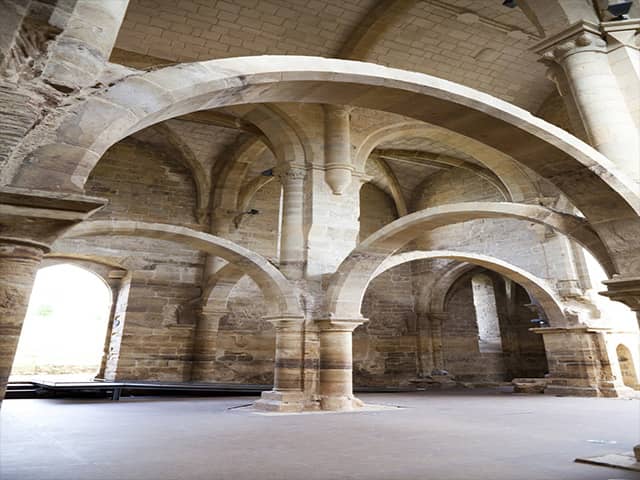
The monastery received donations throughout its existence. The Santa Clara-a-Velha Monastery was able to continue operations thanks to such generosity, as the funds paid for various necessary restorations.
When funds allowed, decorative elements also were added to the building. For example, in the 16th century, the church was decorated with Sevillian tiles and several painted altarpieces.
The constant inundation necessitated the construction of an elevated pavement in the church so that the monastery could continue to operate.
In 1647, life in the Santa Clara-a-Velha Monastery became impossible. The building had to be demolished at that point, according to King John IV.
To ensure the nuns had a place to stay, the king had a new monastery built on a hill on the opposite bank of the river. This new structure was known as the Monstery of Santa Clara-a-Nova (New St Clare).
The last nuns left the Santa Clara-a-Velha Monastery in 1677. The tomb of Queen Isobel, as well as the tombs of other royals who had been buried there, was relocated to the new location.
Following its abandonment, the Mondego River swamps began to engulf the old monastery.
The structure has been subjected to a variety of weather conditions over the years and has remained largely unnoticed.
The Santa Clara-a-Velha Monastery was designated a national monument in 1910, prompting some restoration work to be carried out 20 years later.
However, it wasn’t until 1991 that significant restoration work was carried out as part of an ambitious project overseen by archaeologist Arthur Côrte-Real. Real archeological advances were made by keeping the water at bay with a water containment curtain.
Excavations at the monastery began in 1995, thanks to a large archaeological campaign led by the Instituto Português do Património Arquitectónico. The removal of dirt and water from the ruins enabled the restoration of many architectural and decorative fragments.
Follow us on Facebook and Pinterest
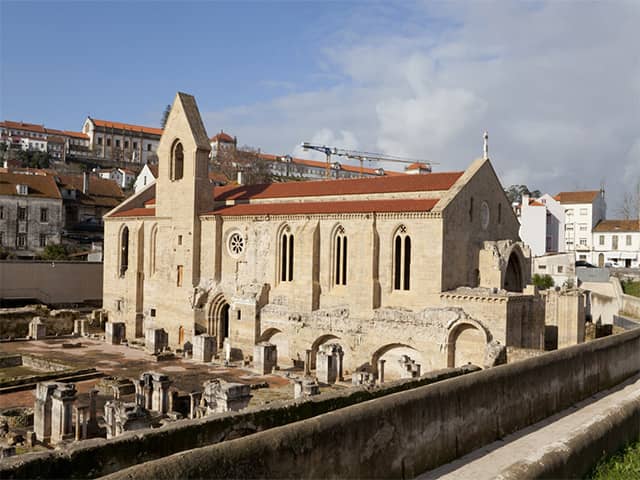
The excavations also aided archaeologists in understanding the layout of the monastery. The church nave had two aisles, stone vaulting, and Gothic mullioned windows. There were also three rose windows. The columns in the nave resembled those in the Monastery of Alcobaça.
Archaeologists discovered a chapter house, a refectory, a relatively small cloister, and the remains of a Gothic fountain. In addition to the monastery, ruins from Queen Isobel’s old palace, which was built nearby, have been discovered.
At a cost of around 27 million euros, an interpretive center with an exhibition hall and shop was added to the former monastery in April 2009. Works of art from the monastery are also on display at the Machado de Castro Museum in Coimbra.
Excavations have yielded a plethora of artifacts that recreate this monument and its history. As a result, visitors today can fully appreciate the architectural and artistic value of these ruins, as well as the items they contain from the past. The interpretive center also hosts cultural events.
Summarize
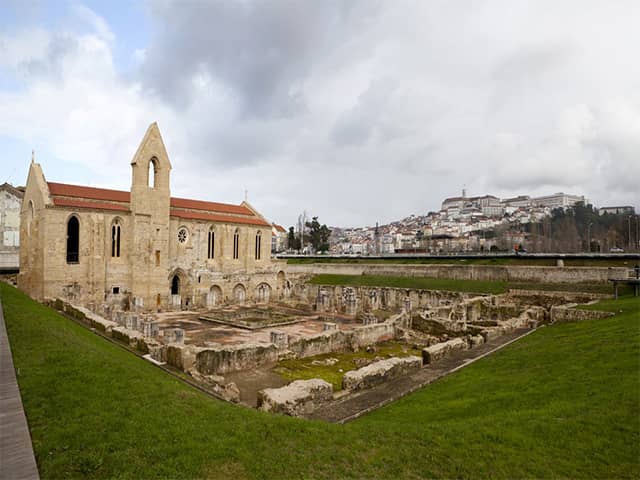
The Gothic Convento de Santa Clara was founded in 1314 by Queen Isabel (Elizabeth of Aragon) near the banks of the Mondego River, across from Coimbra.
Isabel was the wife of King D. Dinis, and it is said that she was very generous and sympathetic to the poor. In fact, the king is said to have had to rein in Queen Isabel’s spending.
After King Dinis’s death, Isabel decided to retire to the Santa Clara convent and joined the Order of St Francis, devoting herself to helping the poor and sick.
She died in 1336, ten years after her husband, and also was buried in the convent where she had spent so much of her life. Her body was interred in a magnificent Gothic sarcophagus. Not long after her death, she was canonized as Saint Isabel of Portugal.
Unfortunately, flooding plagued the convent almost from its inception. This was so severe and disruptive that the Santa Clara was eventually abandoned in 1677, and a new convent (Santa Clara-a-Nova) was built on higher ground. Along with the original tomb, the remains of the now Saint Isabel were relocated to the new convent.
Her ashes, however, were transferred to a silver and crystal urn, which was placed behind the altar.
After the convent was relocated, the old building was exposed to the constant floodwaters and became half buried in silt. The wrecks were excavated and restored only 300 years later.
The ruins of the main church are fairly well preserved, with stone vaulted ceilings and three rose windows. Much of the rest of the old convent has fared less well, with the cloisters reduced to a collection of stump-like pillars and only the fundamentals of Isabel’s palace remaining.
Read another article from us: Dogpatch Theme Park USA is Abandoned Will be Auctioned Off.

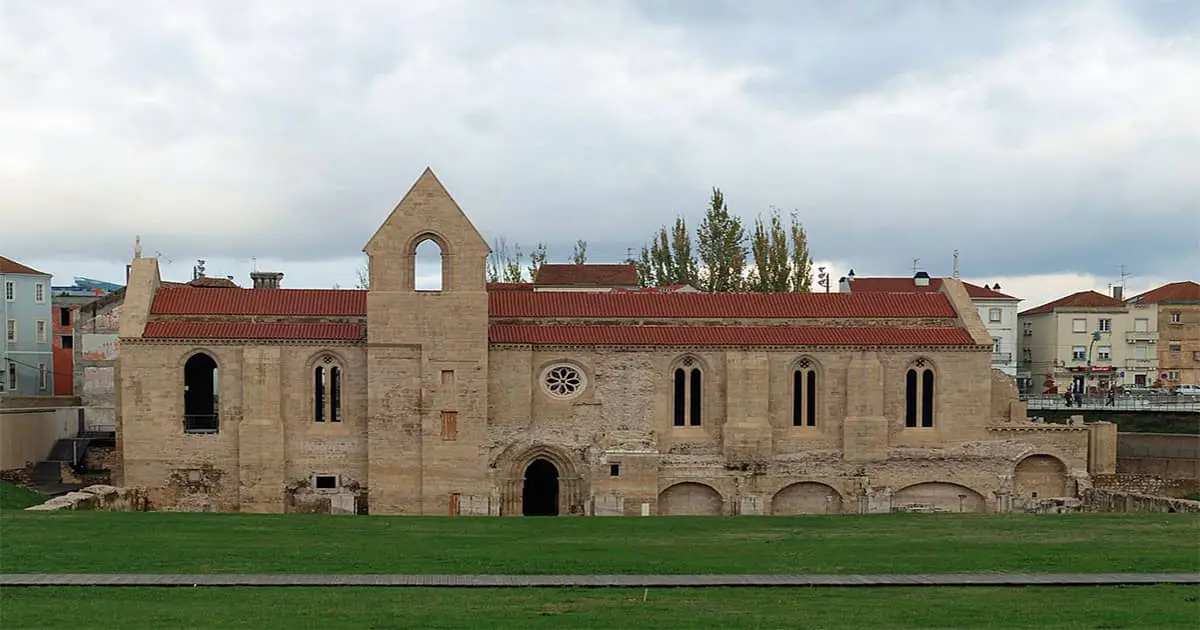
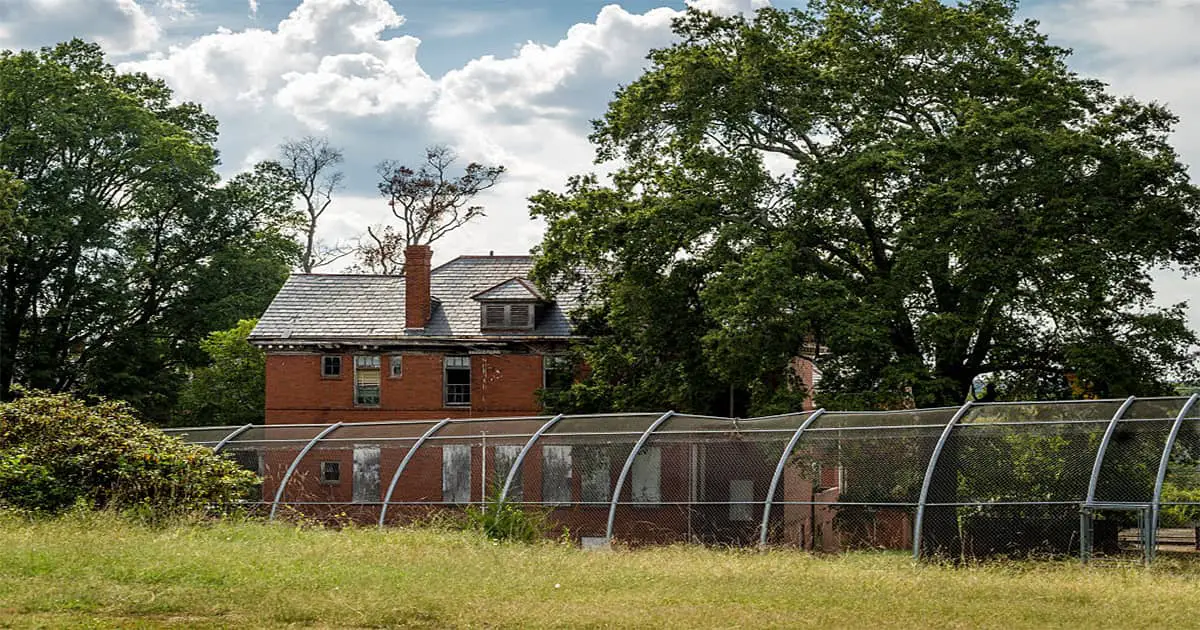

На данном сайте доступен Telegram-бот “Глаз Бога”, который найти сведения о гражданине по публичным данным.
Сервис функционирует по фото, обрабатывая публичные материалы в Рунете. С его помощью доступны 5 бесплатных проверок и глубокий сбор по запросу.
Платфор ма актуален согласно последним данным и охватывает мультимедийные данные. Бот поможет найти профили по госреестрам и отобразит информацию мгновенно.
глаз бога проверка
Данный инструмент — помощник для проверки людей удаленно.
Your comment is awaiting moderation.